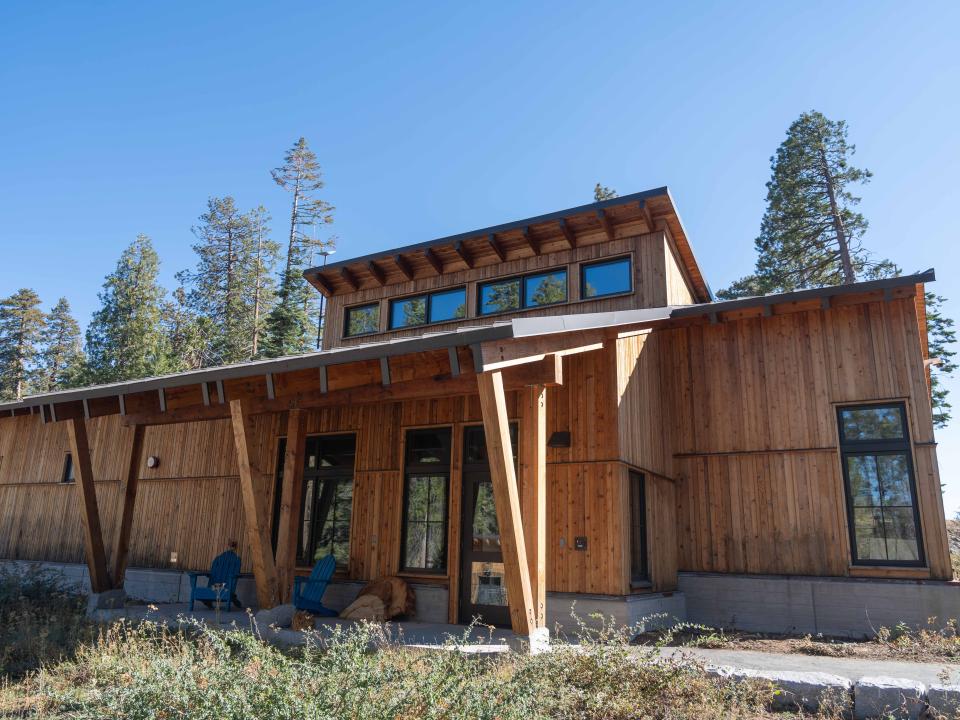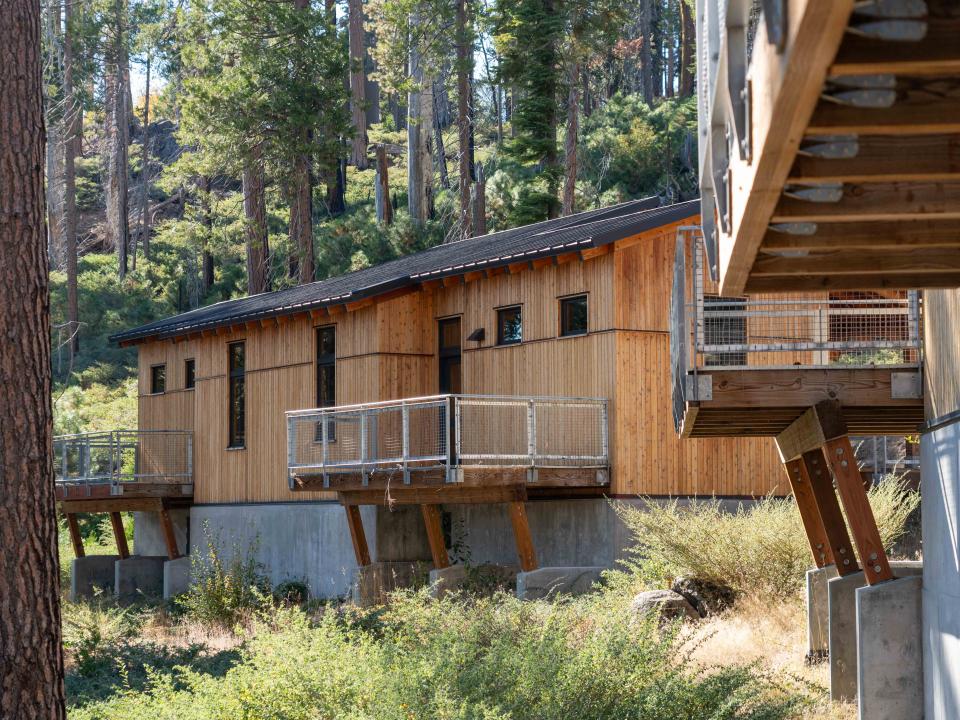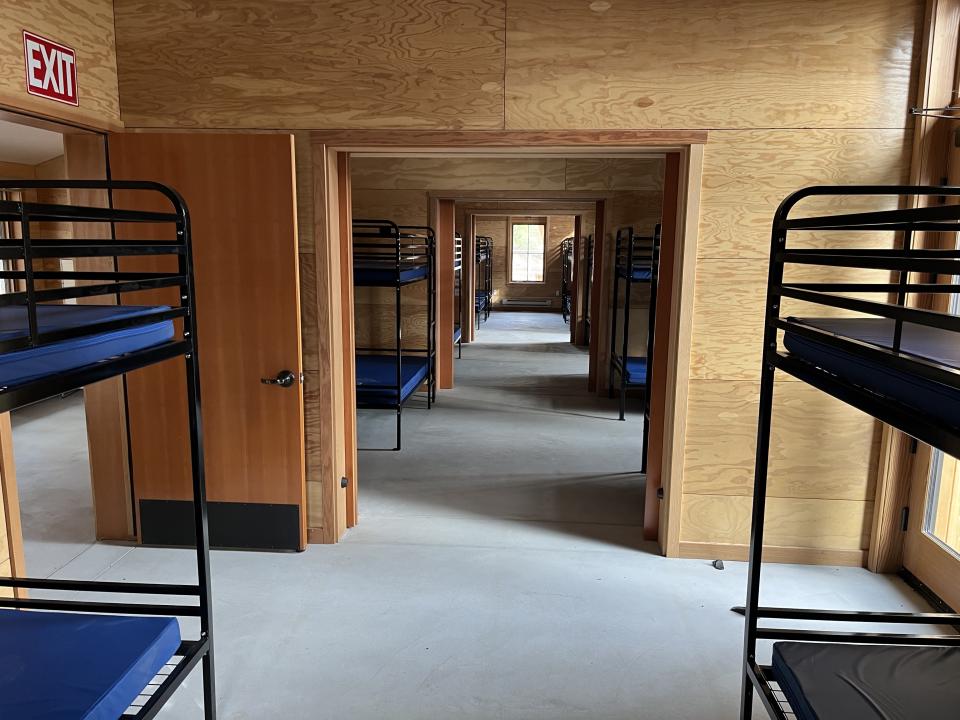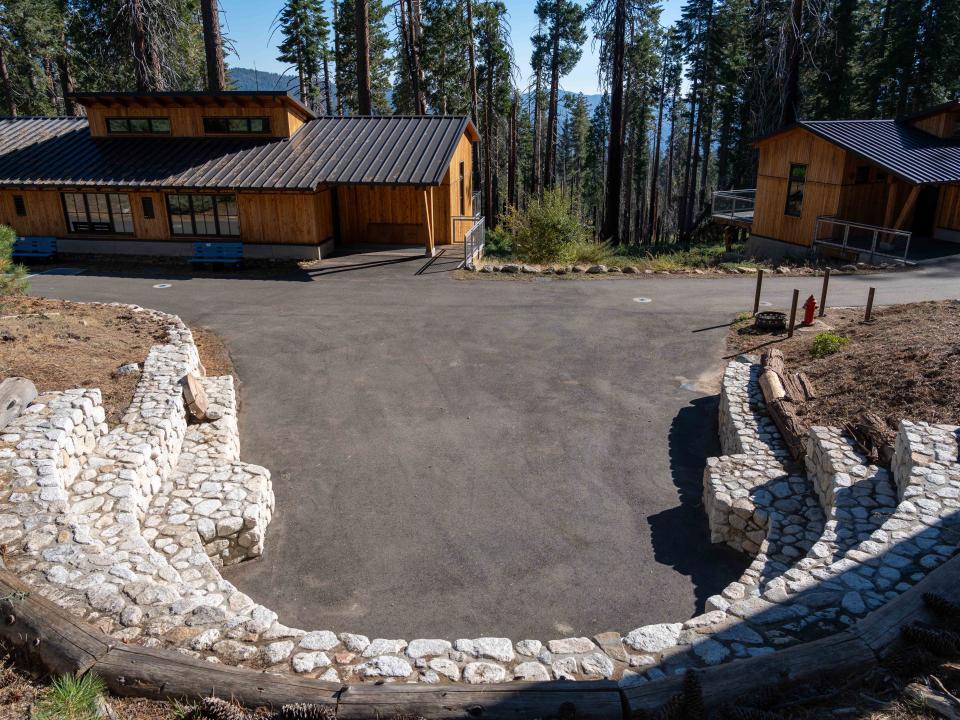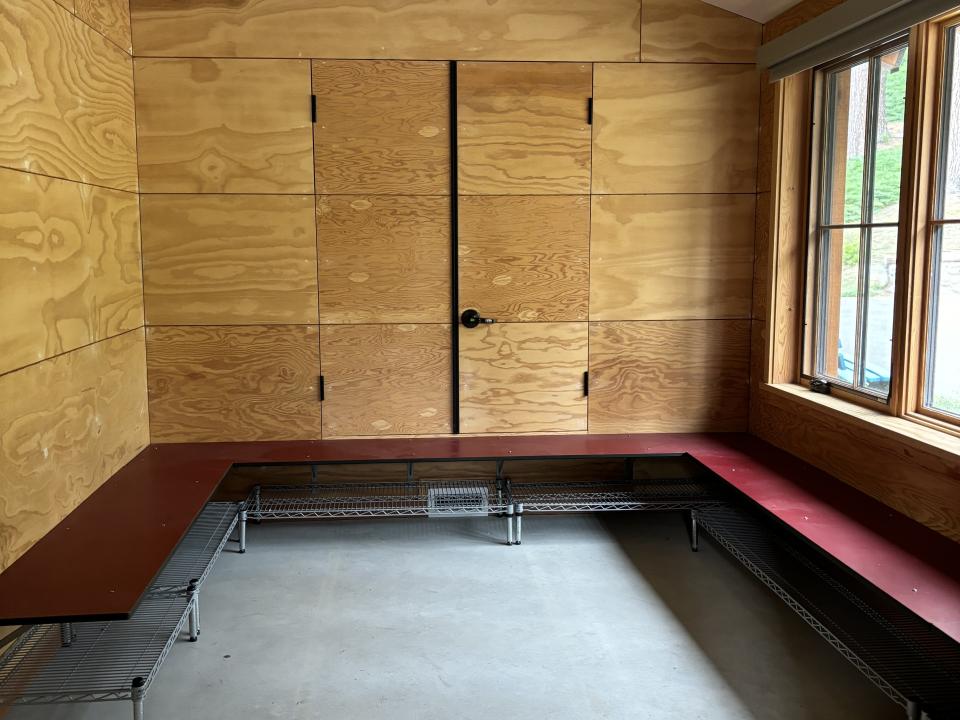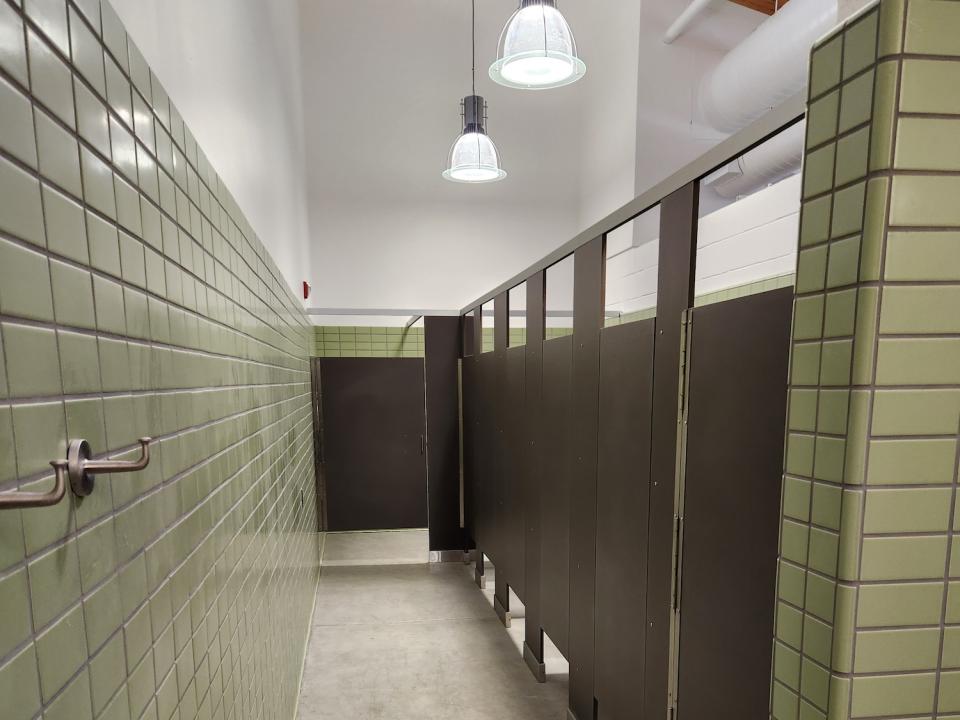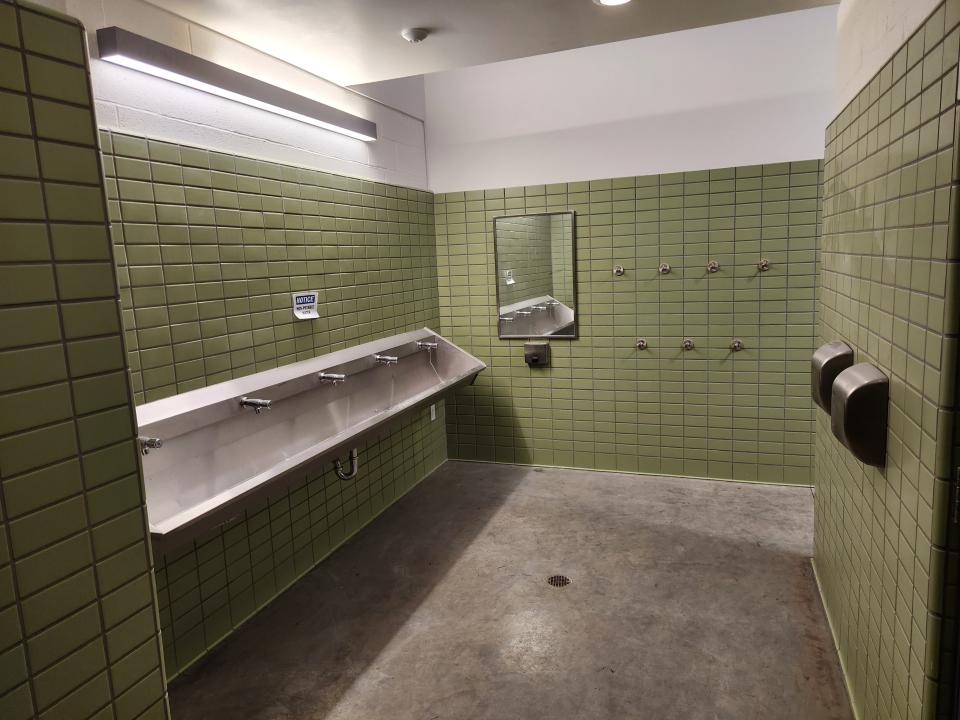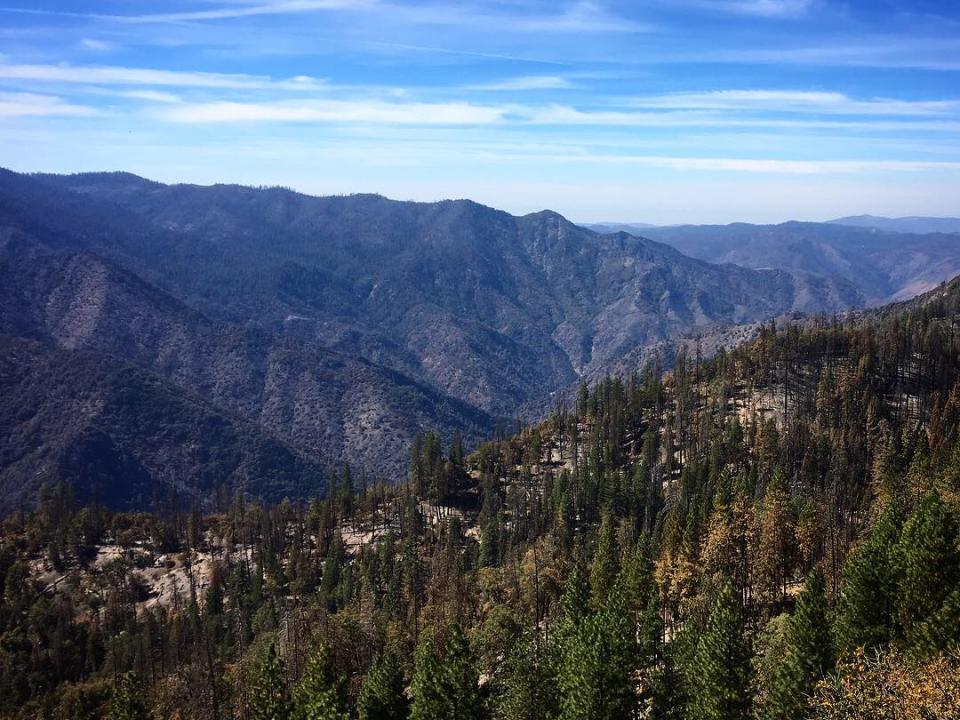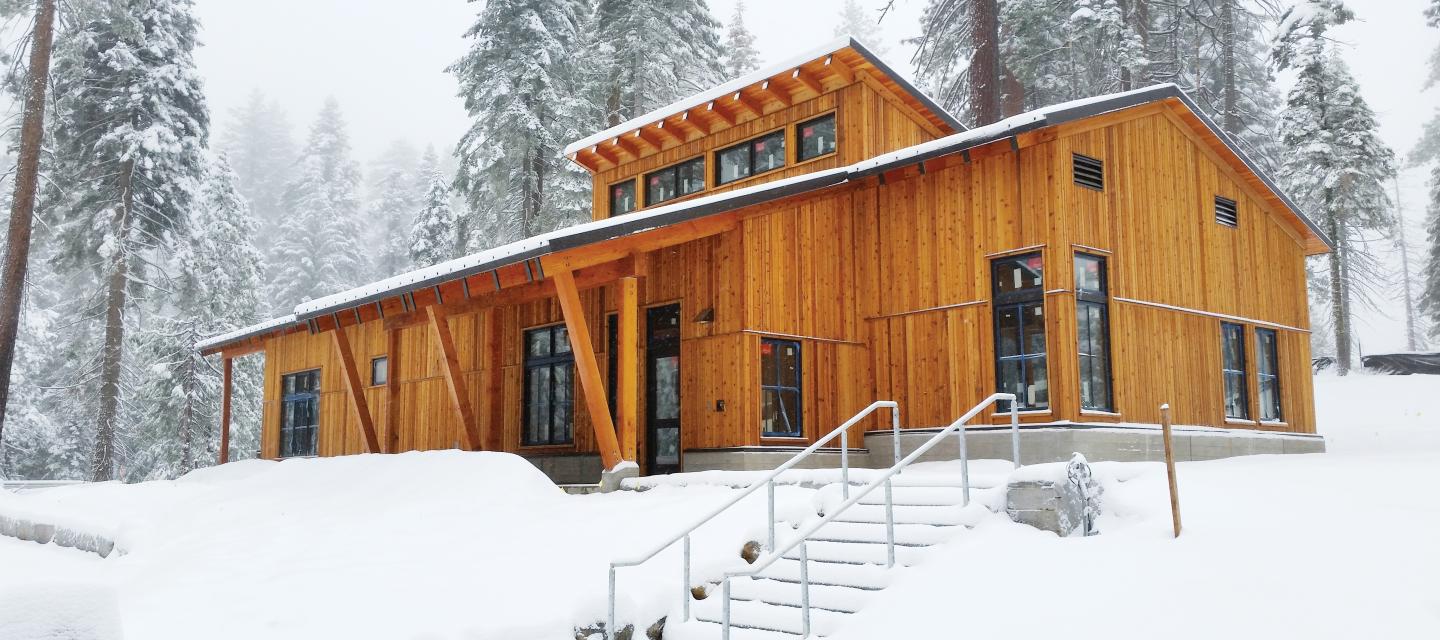
The National Environmental Science Center at Yosemite
The National Environmental Science Center (NESC) is a state-of-the-art world-class facility in a World Heritage Site: Yosemite National Park. This unique location sits at the crossroads of Western History—the first peoples and land stewards, the African American Buffalo Soldiers, the Chinese laborers, Euro-American loggers and ranchers, and iconic conservationists that laid the groundwork for national parks and public land.
Built to a LEED Platinum standard, the buildings themselves provide teachable moments in treading lightly on the land. Located within a landscape shaped by fire, it is a living laboratory of ecosystem health and a mosaic of ecosystems and diverse cultural stories. It is a model of sustainability and resilience in the natural world and inspires young people to explore big ideas for some of our most pressing environmental challenges. Most of all, it envisions the next 100 years of young people and NatureBridge programs yet to come!
Staying at the NESC
The buildings and grounds of the new campus are designed to be the ideal location for overnight environmental education for young people.
- Cabins: Designed to change access and configuration to optimize lodging accommodations for participants. Accommodations for up to 45 participants.
- Bath House: Two sides with single units; each with water saving low-flow shower heads on timers and a gray water collection system.
- Dining: Family-style meals are served in the dining hall. Meals are prepared by NatureBridge culinary staff.
- Universal Accessibility: Universal access buildings and pathways around the campus provide opportunities for people with varying mobilities to stay and explore.
- Architecture as Education: Designed to meet LEED (Leadership in Energy and Environmental Design) standard. As part of the design there are a number of features that will reduce the energy needed on campus and limit the need for fossil fuel consumption for such things as meal preparation and power generation. The campus is located in a previously disturbed area of the park away from sensitive resources.
Campus Gallery
Trails and Destinations
The trail system at the NESC allows NatureBridge participants access to a number of inspiring educational opportunities—forest study plots, nine distinct Sierra Nevada habitats, breath-taking views of the South Fork Merced River watershed, a former homestead and a historic National Park Service fire tower.
There are three main routes departing from campus, connecting NatureBridge participants directly to miles of established trails and the Yosemite Wilderness and Sierra National Forest.
- Wawona Wagon Road: Established in 1853, Wawona Wagon Road accesses a variety of habitats, including a lush meadow system and evidence spanning nearly 6,000 years of human history.
- Sugar Pine Railroad Line: Dating back to the early 1900s, Sugar Pine Railroad Line passes through the heart of the campus. Today these historic roads serve as walking paths with easy 2-5% grades, connecting to seldom visited corners of the park.
- Deer Camp Trailhead: Located less than a quarter mile from campus, Deer Camp Trailhead allows participants to access some of the less frequented southern reaches of Yosemite’s wilderness.
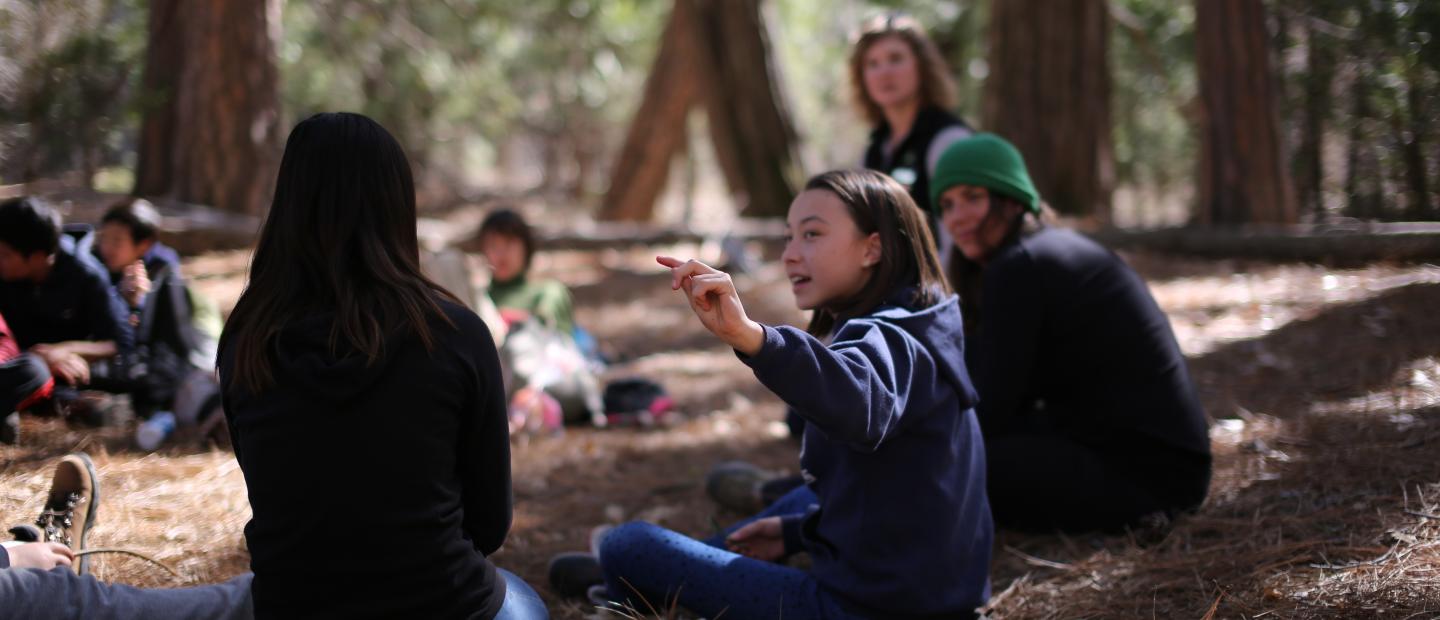
New Learning Opportunities
The NESC promises new learning opportunities for students to engage in authentic, place-based learning. These activities include:
- Discovering the unique cultural history of the area, including an historic NPS fire lookout
- Cross country skiing and snowshoeing at Badger Pass or right from our back door
- Building meaningful relationships and connecting to self through authentic group challenges and meaningful reflection
- Participating in investigations that explore the role of fire in shaping our landscapes
- Understanding sustainable building practices and how to live lightly on the land
- Visit the Mariposa Grove of Giant Sequoias, the largest of Yosemite’s three sequoia groves
Long Term Vision
The new campus will ultimately grow to a capacity of 224 participants. The 56-bed campus is the first phase of this project. The expansion of the center will involve building additional cabins, a formal dining hall, classroom with library and laboratory, administrative building, commercial kitchen, an NPS fire station with an onsite wildland fire crew, two outdoor amphitheaters, and outdoor campfire ring.
The NESC will take the place of our Crane Flat campus. The National Park Service plans to restore the area around Crane Flat to its natural state once NatureBridge has fully vacated. Curry Village will continue to be a lodging option for participants in addition to the new campus.
FAQ
-
When will the NESC be open for participant use?
NatureBridge will welcome students to our new campus in September 2024.
-
What is the status of construction?
The first phase of construction of the 56-bed campus is complete. Two participant cabins, a bath house, maintenance complex, small amphitheater and staff housing have been constructed.
-
Where is the NESC located?
NESC is located at the junction of Highway 41 and Henness Ridge Road, one half mile south of the turnoff for the Glacier Point road. The campus is 19 miles from Curry Village and adjacent to the Yosemite West community.
-
What is the elevation and environment of the NESC?
Similar to Crane Flat, the NESC sits at an elevation of 6,100 ft. and is a picturesque example of an upper montane environment. Participants will gaze upon sugar pine forests and panoramic views of the South Fork Merced River watershed. Henness Ridge is a peaceful and quiet refuge in a seldom visited corner of the park.
-
What are weather conditions like at the NESC?
Due to higher elevation and surrounding forest ecosystems, Henness Ridge temperatures are about 5 to 10 degrees cooler than Yosemite Valley. Not unlike Crane Flat, you can expect cold nights year around and snow cover throughout the winter season.
-
What are the cabins like at the NESC?
The bunkhouses at the NESC provide dormitory-style accommodations with bunk beds. Each bunkhouse has an entryway mudroom where students can store boots, coats and backpacks. Bunkhouses sleep 24 people and within each cabin there are sliding pocket doors that can be left open or closed depending on the size and needs of the group. This allows the space to be configured into one large open room, or separated into up to four rooms. There are two separate decks off of the back of the bunkhouses, offering incredible views and giving students the airy, nest-like feel of being connected to the surrounding forest.
-
How many people are accommodated in each cabin?
Each cabin has 28 beds with twin-sized bunks. Each cabin is equipped with sliding pocket doors that enable the space to be divided into 4 separate rooms with 6-8 beds per room.
-
How will “rotations” (subgroups) be managed at NESC?
Schools that have traditionally rotated smaller subgroups between Crane Flat and Yosemite Valley accommodations will rotate between NESC and Yosemite Valley. Given its similar elevation and environment, NESC will provide many of the same learning opportunities that Crane Flat has provided as well as many new opportunities for learning and exploration.
-
Will adult teachers and chaperones stay in the cabins with students?
Yes, adult teachers and group leaders will stay in the cabins with students. Sliding pocket doors enable adult leaders to manage the separation of sleeping spaces so that adults can choose to be mixed in the same or different rooms from students, in most cases.
-
Is there lodging and accommodations for nonbinary or gender expansive participants?
The bunkhouses at the NESC are equipped with sliding pocket doors that can separate the space into up to 4 individual rooms. This flexibility allows us to create a separate sleeping space for nonbinary and gender expansive participants.A private shower and bathroom are available in the dining lodge for participants who do not feel comfortable using the gendered shower house.NatureBridge strives to create an inclusive and welcoming environment for all participants. If you would like to discuss any special lodging accommodations, please reach out to our Operations team.
-
Do the cabins have electricity or Wi-Fi?
Electric outlets are available in the student cabins, however Wi-Fi is not.
-
Are linens provided?
No, linens are not provided. Be sure to pack the following: sleeping bag, pillow, towel, personal toiletries and a fitted sheet (twin size). This equipment is included in the clothing and equipment lists for your program.
-
Will we be sharing the campus with other NatureBridge groups from different schools?
Yes, student bunkhouses and other common areas may be shared by other NatureBridge groups depending on the size of each group.
-
Where will we eat while staying at the NESC?
Family-style meals are served in the NESC dining hall. Meals are prepared by NatureBridge staff.
-
What will we need to do to be “bear aware” at the NESC?
As in all areas of the park, all “smellies” will need to be removed from vehicles. Personal toiletries will be stored inside cabins and any snacks brought by groups will be stored in the dining hall in a designated storage container.
-
How far are the restrooms and showers from the cabins?
The bath house is located a short walk from the student cabins.
Contact Us
For more information about the NESC, contact Outreach and Enrollment Manager Carrie Anderson at yosemitereservations@naturebridge.org.
To arrange a campus tour during your scheduled NatureBridge program, notify Operations Manager Molly Sennett, at YOSEoperationsmanager@naturebridge.org.
Find Us
NatureBridge
7730 Henness Ridge Road
Wawona, CA 95389
